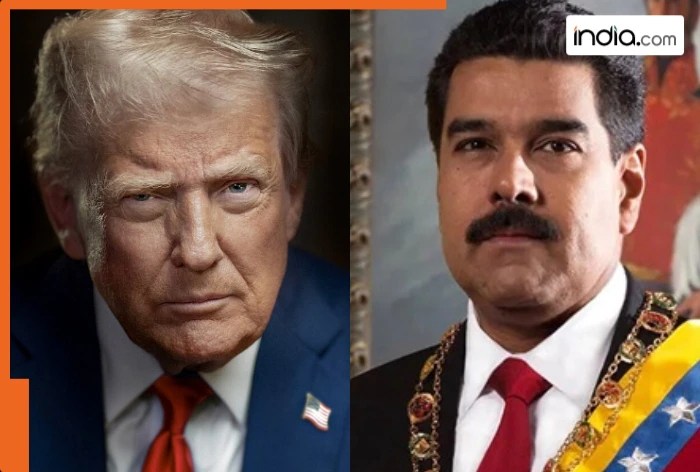Escalating Tensions: Venezuela’s Military Moves Amid U.S. Presence
The Situation Unfolds
New Delhi: In a bold display of defiance, Venezuela has recently deployed warships and drones to its coastal areas, a move prompted by escalating tensions with the United States. The Trump administration’s decision to send three warships and 4,000 Marines to Venezuela’s border has incited Venezuelan President Nicolas Maduro to publicly state that he will not submit to U.S. threats. Maduro has emphasized that his administration will respond decisively to any U.S. military actions perceived as aggressive.
U.S. Military Presence
The introduction of U.S. naval power in the region marks a significant escalation in military posturing. Guided missile cruisers and nuclear-powered submarines are now making their way to the Caribbean, further increasing the stakes in this geopolitical chess game. Venezuelan Defence Minister Vladimir Padrino released a video announcing the initiation of drone patrols and naval activities along the Caribbean coast, a show of strength aimed at deterring U.S. intervention.
Venezuela’s UN Petition
Amidst the rising tensions, Venezuela has taken its grievances to the international level. On August 26, the Venezuelan government filed a petition with the United Nations, calling for intervention in what it describes as an aggressive military buildup by the U.S. in the Caribbean. The request includes an urgent demand for the UN to halt American military deployments immediately, illustrating Venezuela’s desire to resolve the situation through diplomatic channels while asserting its sovereignty.
Accusations and Counter-Accusations
One of the core issues fueling tensions is the accusations leveled by the Trump administration against Maduro. The U.S. has alleged that Maduro leads the Cartel de los Soles, a notorious cocaine smuggling organization. The Trump administration’s approach has long involved sanctions aimed at crippling Venezuela’s oil sector and increasing pressure on Maduro’s government. However, these measures have yet to yield a regime change, leading to a protracted standoff between the two nations.
Maduro’s Defiance
In a televised address, Maduro expressed resolve in the face of U.S. threats, announcing the mobilization of 4.5 million militia fighters ready to defend the nation. He urged his people to stand firm and prepared for all necessary actions to ensure national safety. The dual deployment of drones and naval vessels serves to reinforce this message and project strength in the face of external pressures.
Highlighting Key Developments
To encapsulate the ongoing developments:
- Venezuela has begun patrolling its coastal regions with warships and drones.
- The U.S. has responded with a significant military presence, including the deployment of Marines and naval cruisers.
- Venezuela has filed a formal petition with the United Nations for intervention regarding U.S. military activities.
- Accusations of drug trafficking against Maduro continue to fuel hostilities.
The Broader Implications
These heightened tensions between Venezuela and the United States herald complex implications not only for both nations but for regional stability in Latin America. The situation is fluid and riddled with potential ramifications, making it a focal point for international diplomatic discussions in the coming weeks.

